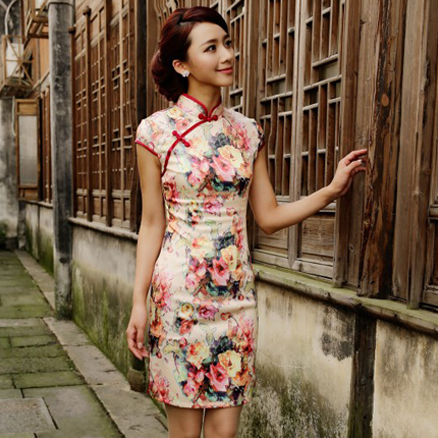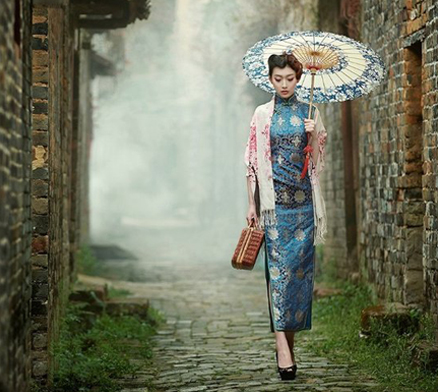
Costumes have maintained an important place in Chinese culture for more than three thousand years. Moreover, Chinese costumes are magnificent and colorful. Many dynasties throughout China’s history each had its own unique style of costumes, with styles changing or disappearing as the dynasty changed, declined, or were replaced.
Chinese Cheongsam
The cheongsam, or Qipao in Chinese, evolved from a style of ancient clothing worn by the Manchu ethnic minority. During the early years of the Qing Dynasty (1644-1911) they unified China, and standardized the nationwide costume as well. At that time, men wore a long gown and a mandarin jacket over the gown, while women wore the cheongsam. Although the 1911 Revolution toppled the rule of the Qing Dynasty, this female dress survived the political change and, with succeeding improvements, has become the traditional dress for Chinese women.
From the 1930s, cheongsam almost became the uniform for women. Folk women, students, workers and high society women all wore the cheongsam, which even became a formal suit for occasions of social intercourses or diplomatic activities. Later, the cheongsam even spread to foreign countries and became a favorite among foreign females.
After the 1940s, influenced by new fashions at home and abroad, the cheongsam became narrow-sleeved and fitted to the waist, with a relatively loose hip covering, and its lower hem reached the ankles. Next emerged various forms of cheongsams we see today that emphasize color decoration and set off the beauty of the female form.

The main reason that Chinese women like to wear the cheongsam is that it fits the female Chinese figure well. The style has simple lines and looks quite elegant. What’s more, it is suitable attire during any season by both the old and the young.
According to the four seasons and the wearers’ needs, the cheongsam can either be long or short, unlined or interlined, woolen or made of silk floss. Moreover, when constructed with different materials, the cheongsam presents different styles.
Cheongsams are made of silk stamped with patterns of fine and dense flowers, plain lattices or thin lines, all demonstrating feminine charm and modesty; those made of brocade are eye-catching and magnificent and suitable for formal occasions that require greeting guests and attending banquets.
The cheongsam displays strong national flavor and embodies the beauty of Chinese traditional costumes. It not only represents the Chinese female costume but also has become a symbol of a traditional oriental costume.
Chinese Culture
General Chinese (Beginner Level)
General Chinese (Intermediate Level)



